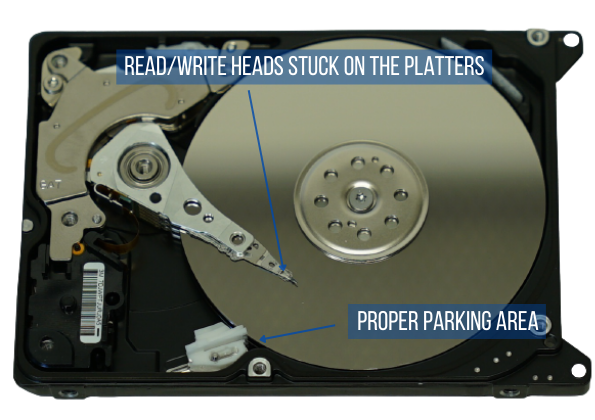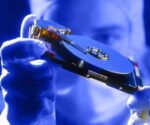
Table of contents
Have you ever heard that your hard drive is beeping? If you haven’t, you’re lucky. The beeping inside your hard drive means that your disk struggles to read and write data. This is considered a potential data loss problem.
Unfortunately, there are no beep codes for hard drives, regardless of their vendor. This means all disks have some common root causes and potential fixes. These beeping sounds might occur because of a different reason. Some are damaged read/write heads, seized disk platters, seized/stuck/burned-out spindle motor hub, or even shorted PCB (this is a very rare case, but it could happen). The read/write head is supposed to be in a “parking area” in a normal operational situation. The buzzing/beeping sounds come when the read/write head is in the wrong position or stuck on the platters.
There are a few fixes you can try on your own, but we at Platinum Data Recovery do recommend you look for a professional data recovery service.
Should you DIY? (do it yourself)
Fixing broken things by yourself has always been an interesting task, don’t you agree? Whatever your answer is, things are very much different when it comes to faulty hard drives. You might permanently lose your data, so be aware of the risk. There is less than a 20% chance to fix it using any of the DIY methods. And you will see why.
First and foremost, if your hard drive produces a beeping sound, you should immediately turn your computer off or disconnect the hard drive from the motherboard (if possible). If you are using the external drive, remove the USB cable and power cord (if any). Running a beeping hard drive can overwhelm and burn internal components. When the buzzing/beeping hard drive is running, the motor is trying to spin the drive. The read/write head gets stuck on the platters. And that will result in damaging the platters as the read/write heads are being dragged over the platters.
This decreases the possibility of recovering your private and/or business data, even with data recovery professionals.
What can you try?
If you find that your disk has physical problems, no software can help you fix it. It is not necessarily true that any vendor claiming that their software product can solve a beeping problem. When it comes to an internal hard disk installed in computers or notebooks, there are two things you can try. The first one is replacing IDE/SATA cable/s with a new one. If this doesn’t help, and you have a spare power supply, you could replace it and verify if you may have a problem with lack of power.
One of the challenges users experience in DIY environments is moving read/write heads when they are stuck. If you decide to open your hard drive and fix some of the hardware components, please don’t. If you try it, you might damage the actuator arm. That is a bad situation because when users turn on the hard drive, read/write head will, instead of hovering over the platter, scratch the platter and potentially make data unrecoverable. To be more optimistic, partially recoverable, and very expensive.
Beeping or buzzing hard drive solutions
1) Verify if your external disk is working properly – you can easily do it by using IDE/SATA USB adapter. You need to connect your disk to the adapter and then the adapter to your computer or notebook. If you don’t have the external adapter, you can remove your disk for its case and connect it directly to your motherboard using IDE/SATA cables and a power supply.
2) Use proper cables and power supply adapters (older disk models). Every manufacturer recommends using only original cables that come with the disk. Or you can purchase it. Not only that you need to avoid third-party USB cables, but you should also avoid using cables that are longer (e.g. 3 m) than recommended. Older external disks come with a dedicated power adapter. You should only use original ones, and not third-party, also called universal power adapters. The diagnosis you might try to do with third-party cables or adapters wouldn’t be very promising and valuable.
3) Check your power socket – Check if your power socket or power hub can deliver enough power to your external disk.
How do professionals fix beeping drives?
You need to use a certified cleanroom for any job that includes opening a case. If a single grain of dust enters the magnetic plates (normal case in non-clean rooms) that can damage the mechanism and cause the read/write heads to touch the platter surface and permanently destroy and lose the data. We at Data Platinum Recovery have ISO 5 class 100 certified cleanroom to perform all types of data recoveries.
Once one of our data recovery professionals diagnoses a problem, they will replace the broken components with healthy ones and make a disk clone of the original disk. In other words, data professionals will remove read/write heads without dragging them over the platter by using special data recovery tools. And then, in the next step, they will install a new healthy read/write heads from the same disk model, part number, close manufacture date, etc.
Data professionals will extract all the sectors around the damaged area and then work with the damaged area. We already mentioned that using data recovery software is not very helpful for this kind of physical problem. The software will continuously attempt to read from the faulty area, which will further damage the drive.
You need to admit; this would be very challenging in DIY environments, don’t you agree?

